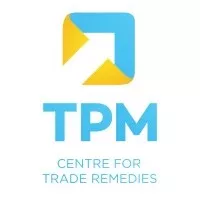- within International Law topic(s)
- within Antitrust/Competition Law topic(s)
- in Africa
On 20th January 2025, the U.S. President commenced his second term by launching "America First" Trade Policy. The policy aimed at a comprehensive review of U.S. trade policies, particularly targeting trade imbalances and unfair trade practices. In order to rectify the challenges posed by trade imbalances and the alleged drug trafficking, the U.S. administration imposed various additional tariffs on imports from certain countries. However, such additional tariffs have now become the basis of extensive litigation.
The tariff structure in question
On 1st February 2025, the first set of tariffs under International Emergency Economic Powers Act, 1977 (IEEPA) were imposed, proclaiming a national emergency on account of illicit trafficking of drugs, particularly fentanyl. Imports from China were subjected to an additional 10% duty which was later increased to 20%, while imports from Canada and Mexico each faced 25% additional tariffs. Canada's energy resources were subject to a separate 10% levy. This marked the beginning of a mercurial tariff war.
By 13th February 2025, the U.S. administration issued a memorandum instructing ministers to examine all non-reciprocal trade relationships and implement a "fair and reciprocal" tariff framework. This laid the groundwork for the contentious "Liberation Day" tariffs. The justification of these emergency measures was that there were major security risks arising from large U.S. trade deficits. Trade deficit created critical import dependence and this was due to non-reciprocal trade practices like tariffs and market access barriers by partner countries.
On 2nd April 2025, the U.S. imposed the following additional tariffs under the IEEPA, which consisted of:
- A baseline tariff of 10% on all imports (effective 5 April);
- A reciprocal, country-specific tariff (effective 9 April). This was based on a list of 57 countries with tariffs ranging from 11% to as high as 50%.
- Imports from India were subjected to additional tariff of 27%.
Retaliation from WTO members
Soon retaliation ensued from various WTO members like the EU , Canada and China. A major trade escalation ensued specifically with China. On 9th April 2025, the U.S. claimed that China failed to decrease tariffs on US-origin goods, and thus, raised China-specific reciprocal tariffs from 34% to 84%. This was in addition to other existing tariffs. Thus, China's cumulative tariff rate went upto 104%. China responded by increasing U.S. tariff rates from 34% to 84%. On 9th April itself, the U.S. administration issued another executive order, further raising tariffs on China to 125%. Considering the additional 20% tariffs imposed pursuant to drug trafficking emergency, the total tariff burden on China was increased to 145%. China matched the U.S. escalation, raising its tariffs on U.S. goods to 125%.
As a result of the continuous tariff wars, the global markets crashed, U.S. currency dipped and concerns of economic and financial turbulence, including increased cost of goods for American consumers began to arise. Therefore, a 90-day moratorium or an adjustment period, on country-specific reciprocal tariffs (until 9 July) was put into effect. The 10% baseline tariff, however, remained applicable.
Amid de facto embargo-like conditions between U.S. and China, bilateral talks between the two countries commenced in Geneva on 7th May 2025. A joint U.S.-China statement was issued on 12th May wherein it was announced that both the countries would reduce tariffs to 10%.
Intervention by American Courts
On 14th April 2025, five small businesses, including V.O.S. Selections Inc. and Genova Pipe, challenged the IEEPA tariffs before the U.S. Court of International Trade (CIT). A similar suit was brought by 12 states (including Oregon, Arizona, and New York) on 23rd April. Since the matters were aimed at the same tariffs, they were consolidated.
On 28th May, the CIT ruled that the President had exceeded his authority under the IEEPA, which does not authorize the imposition of retaliatory tariffs of global scope. Accordingly, the drug trafficking tariffs against China, Canada and Mexico and multi-tier retaliatory tariffs were struck down. The administration was directed to withdraw these tariffs within 10 days.
The U.S. District Court for the District of Columbia, on 29th May 2025, delivered a similar ruling in a suit brought by Learning Resources Inc. and Hand2Mind—two educational toy companies and small businesses, relying heavily on imports from China, Taiwan, Vietnam, Thailand, and India. The Court found that the tariffs exceeded presidential powers under IEEPA; and granted a temporary injunction on the grounds that the tariffs posed existential business threats to the two plaintiffs. The administration was given 14 days to appeal.
Subsequent to the CIT's ruling, the U.S. administration filed an appeal with the U.S. Court of Appeals for the Federal Circuit (Appeals Court). The appeal questioned the CIT's authority to decide the case in the first place. On 29th May, the Appeals Court issued an immediate stay against the CIT's 28th May decision. The appellants were ordered to respond by 5th June, with the administration's reply due on 9th June. As the stay remains in effect, companies must continue paying the applicable tariffs. The administration has indicated its intention escalate the matter to the Supreme Court, if needed.
The American perspective
While the matter is sub-judice at the appellate court, the 90-day deadline, till 9th July 2025 is still applicable, with 10% baseline tariff currently in effect. Specific tariffs on China, Canada and Mexico are also applicable in the interim. The fiscal benefits of these tariffs to the U.S. are evident. As per the U.S. Customs and Border Protection, between 1st October 2024 and 30th April 2025, duties collected from the contested tariffs under IEEPA amounted to USD 7.9 billion from China and Hong Kong, USD 2.9 billion from Mexico, USD 1.2 billion from the 10% baseline tariff, and USD 1 billion from Canada. Separately, other tariffs unaffected by the ongoing legal proceedings have also resulted in fiscal benefits. These include tariffs imposed under Section 301 on Chinese products (USD 23.4 billion), Section 232 on steel (USD 1.3 billion), automobiles (USD 1.2 billion), and aluminium (USD 766.9 million), as well as Section 201 on solar products (USD 253.4 million).
Global perspective
The current economic uncertainty has resulted in fresh bilateral negotiations. India is currently seeking to finalise a deal by June-end to avoid a 27% reciprocal tariff. As per the US-China joint declaration, China is currently imposing a 10% tariff on U.S. imports, and the U.S. reciprocates with a total 30% additional tariff. Countries are now seeking tailored trade arrangements with the U.S, including Japan. The recently concluded U.K.-U.S. "Economic Prosperity Deal" serves as an example. The trade deal has reduced the tariffs on most imports from U.K. to 10%.
However, economic uncertainty still looms since the U.S. administration has now announced that Section 232 tariffs on steel and aluminium would be raised to 50%. If put into effect, this would be a significant blow for India, since it exported USD 4.56 billion worth of iron, steel, and aluminium products to the U.S. in the current fiscal year.
In conclusion, these tariff revisions have triggered global economic ripples. With key court rulings pending and the 9th July deadline approaching, global trade partners, including India, face urgent decisions amid continued uncertainty.
The content of this article is intended to provide a general guide to the subject matter. Specialist advice should be sought about your specific circumstances.



